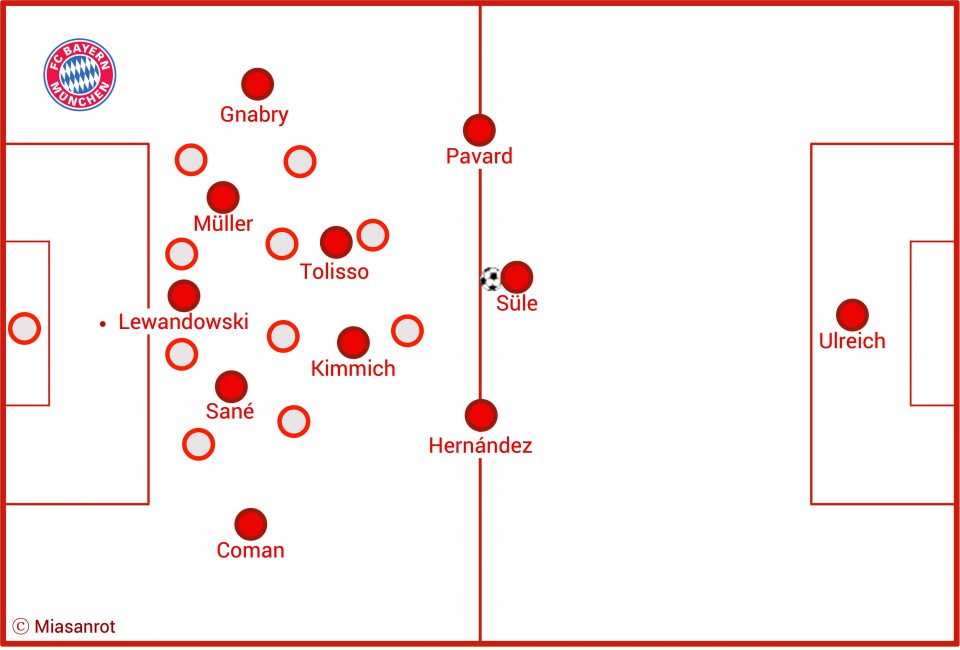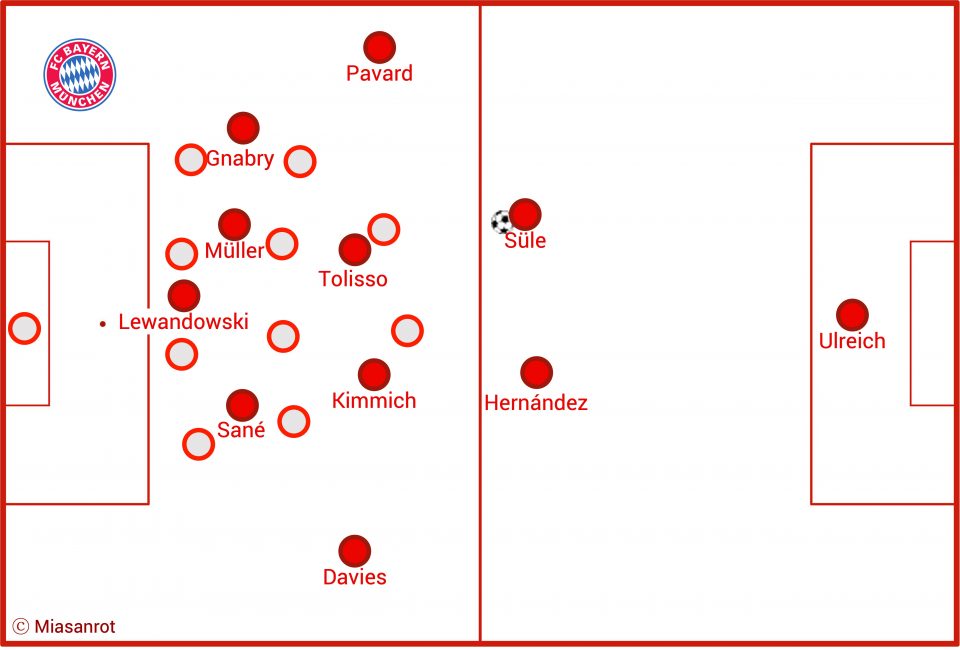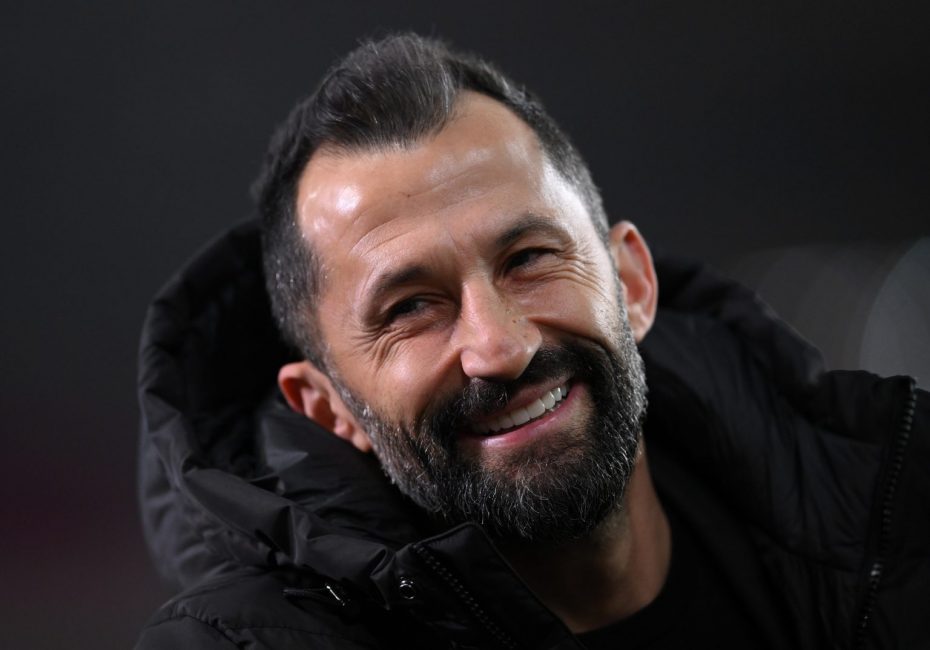FC Bayern Rondo: Preview vs. Frankfurt and what else happened this week
A 2-4 defeat away to Bochum, a 1-1 draw in Salzburg and finally a goal down at half-time against bottom of the table Greuther Fürth – all hell broke loose on Twitter. No other social medium is as fast-moving as this one, in none does the world change so dramatically within such a short time.
At half-time, the first tweets questioned Julian Nagelsmann. Some of them ironic, some with a serious undertone, many of them emotionally charged. After the game, the world looked a little better. Four goals, a clear improvement in the second half and a week ahead in which the team could train without the distraction of a mid-week match.
These are critical weeks for Bayern. In view of their current worries, the upcoming fixtures list does not suit them very well. Away to Eintracht Frankfurt, at home against Bayer 04 Leverkusen and FC Salzburg, then away at TSG Hoffenheim – after these four games it will be clearer where the journey is headed for the record champions this year.
FC Bayern: Bad mood in the dressing room?
The recent results and especially the lack of defensive stability are said to be a frequent talking point in the dressing room as well. According to newspaper Bild, the team has concerns mainly on three issues: the tactics, the mentality and the ever-present distraction of continuously ongoing contract negotiations. But first things first: With respect to tactics, there is criticism of the offensive style of play. The defenders in particular feel left alone. Specifically, there is a concern that the team’s additional goal haul does not outweigh how much more open it is at the back.
If the information of the tabloid is correct, Nagelsmann should have an easy time refuting the argument. 20.6 shots, 2.77 expected goals (xG) and 3.22 goals per game as compared to to nine shots conceded, 0.97 expected goals against (xGa) and 1.13 goals conceded per game this Bundesliga season. Last season, the numbers looked like this: 17.1 shots, 2.23 xG, 2.91 goals, 10.1 shots conceded, 1.21 xGa and 1.29 goals conceded per game.
Taking these metrics as the most important markers, Nagelsmann can claim to have made the team better in every area. But of course it is not quite that simple. Besides objective findings, a great deal in football is still subjective. And the subjective perception obviously is different, especially at this stage of the season.
Flick: “These are just some of these days”
The fact that players like Lucas Hernández, Niklas Süle or even Dayot Upamecano regularly feel left alone does not seem to come entirely out of thin air. They receive the most criticism, even though on the pitch they often have to deal with situations that would pose a challenge to any defender in the world. However, the fact that defending starts up front and in possession of the ball is often ignored. Last week we already analysed why Bayern’s problems are not exclusively due to individual defensive mistakes.
So a mood problem at FC Bayern then? According to Miasanrot information, the team mood is still far from sour. And Bild also writes in the same report that the players have full confidence in the coach. At the pre-match press conference, Nagelsmann also commented on that: “The opinion of my players is very important to me. I sought the exchange and always have an open ear for ideas of a squad with the quality like ours. The feedback from the team is that they are happy with the tactical direction, with the path we have taken and will continue to take.”
Much ado about nothing then? It is not like that too. Nagelsmann has to get a grip on the problems soon. If he cannot stabilise the defence again, even sparks of dissatisfaction have a chance to grow into a larger fire – and that probably not only on the outside, but perhaps internally for the first time too.
But there is no reason to panic at FC Bayern yet. In recent years, there have always been phases over the course of a season in which it was difficult for the record champions to realize their full potential, even in the Bundesliga. “The quality of the team is there, Julian is a fantastic coach,” said national coach Hansi Flick on Amazon Prime during the week: “They are getting back on track. Now things might not be going quite as hoped. You just have that sometimes.” Who should know better than him?

(Photo: Joosep Martinson/Getty Images)
Nagelsmann and his tactics: a hypocritical debate
Possibly Nagelsmann, who has been tinkering with his to improve his team’s problems for weeks. There is much discussion in the media about FC Bayern’s formation. Back three, back four, one holding midfielder, two holding midfielders – Nagelsmann has been experimenting a little more often recently than in the first half of the season. But is that the cause of the mini-crisis?
The discussion about the three-man backline is somewhat hypocritical. In Bochum, for example, Bayern played with four centre-backs in a back four and still conceded four goals. Both there and against Fürth, things only got better when the coach switched to a back three. Ultimately, a team is not more stable when it plays with three or four defenders, but when the quality and the coordination on the pitch are right.
In Bochum, the problem was more to be found at the deep lying playmaker position, where Joshua Kimmich was on his own. Thomas Müller was the deepest player in the Bayern midfield as a withdrawn number eighth – on average even a little deeper than Kimmich himself. The truth is that FC Bayern lack a real pace-setter in the middle of the park who knows how to take the tempo out of a game. Someone like Xabi Alonso was. Or the way Bastian Schweinsteiger took the wind out of Dortmund’s sails in the 2013 Champions League final.
Tactics debate: three-man or four-man backline?
Bayern are prone to acting too hastily, wanting to go on the offensive too quickly. That is not a tactical problem, but one of basic attitude. It is the legacy left by Hansi Flick – with all its spectacular advantages, but also with some disadvantages. A thought experiment: Which alignment do you consider more stable defensively and which more aggressive offensively?


First of all, can this question be answered at all? At least the following aspects stand out from a tactical whiteboard point of view:
- At first glance, the central protection in the first third appears to be more robust with a back three as depicted in the upper image. Three defenders can directly protect the ball when it is lost early, whereas only two defenders can do so at the bottom. The higher up the ball is lost, the more difficult it becomes because the players are supposed to build up pressure over the wings. A full-back can offer protection even from a high position, but then he would have to cover large distances going inside or tracking back.
- In addition, in a back four build-up play as a whole is automatically wider, which means there is a danger that it will be more difficult to use the width effectively in the final third. If you play out wide early on, it is easier for the opponent to shift out early too and block the wings.
- The criticism that with a back three the players in offense would impede each for their sheer quantity, however, is actually null and void. In both 3-2-4-1 and 4-2-3-1, the offensive line-up is actually similar. One could even say that it becomes more difficult out of a back four to get into one-on-one situations via the wings. First because of the problems described in point 2, but also because Benjamin Pavard has to take on more offensive duties down his right side.
True, you could also deploy a 4-2-3-1 with a more defensive orientation. But is that an option for FC Bayern? Probably not. What should be clear from the reasoning presented here, however, is that the Bayern team does not have a shape problem but a squad problem. Nagelsmann lacks players who can fit in seamlessly, especially in central midfield and at the defensive wide positions. Marcel Sabitzer, Marc Roca, Bouna Sarr, Omar Richards, Corentin Tolisso – there are too few players in the positions 12 to 16 who could really put pressure on the starting eleven.
The reasons for this shortage are manifold, but they are ultimately irrelevant to the verdict. Because the status quo looks like this: Bayern lacks the strength in depth to make up for even just a few absences without losing quality. The squad is not balanced enough. And so any discussion about basic formations is hypocritical. Because Nagelsmann has almost no choice but to “experiment”. Even a return to a supposedly tried and tested formula is a risk these days – as the recent performances out of a 4-2-3-1 formation showed.
FC Bayern probably considering new transfer strategy
Therefore, it will be important for the club to rethink their strategy on the transfer market going forward. As the Kicker recently reported, Bayern have recognized this too – and are considering to break an unwritten law in the process. Under the leadership of Uli Hoeneß and Karl-Heinz Rummenigge, the club never tired of emphasising that the record champions were not a selling club. After all, the club was never dependent on generating income through the sale of players.
That now seems to change, according to the magazine. And Julian Nagelsmann does apparently not have a big problem with that either: “I don’t see any danger in it, you have to define selling club,” says the 34-year-old: “Maybe you get a 21-, 22-year-old who you can sell again at 25 to generate money instead of bidding for a 27-year-old.”
The pandemic had taken its toll and there would be “several factors that make it necessary to think about certain things,” the coach said. There was also a lot of short fuses and venting steam on Twitter on this topic. Did those responsible now want to push ahead with the Borussiaisation of FC Bayern?
Will Bayern become the next Borussia Dortmund?
Nagelsmann immediately cut short such fears: “Of course, there is a difference between signing a 16- or 17-year-old, training them for three years and selling them to Real Madrid, and signing 22- or 23-year-old players at a still reasonable price, but who during their stay have the chance to win everything with Bayern Munich and then selling them after three or four years to generate money.”

(Photo: Matthias Hangst/Getty Images)
Reading between the lines it seems clear that Bayern are simply looking for another option. The latest round of contract renewals has shown that the Bavarians are currently still in a position to keep their key players.
The way of how this strategy is implemented will ultimately determine whether Bayern can be successful with it. They do not want to join in the game of the big transfer fees, so they are looking for alternatives. This presumably also because they have noticed with David Alaba, Niklas Süle and now probably also Corentin Tolisso that transfers without the opportunity to generate a transfer fee can happen very quickly.
Although it seems obvious that Dortmund have not made signifikant progress with this strategy in recent years, the situation at Bayern is probably different. There will probably not be a complete reorientation towards becoming a selling club. But integrating this avenue as an optional course of action within a broader strategy could certainly make sense for the coming years. But in the short term it will be more important to fix the balance problems in the squad first.
Weeks of truth: losing points against strong opponents?
But because the situation is as it is at the moment, the coming weeks are quite exciting. First of all, there is the away game against Frankfurt. Munich have lost their last two away games in the Hessian capital and the reverse fixture this season also went to the Eintracht. Only three of the last seven guest appearances in Frankfurt ended with a win for the record champions.
The form of Oliver Glasner’s team is not exactly impressive, but there are teams that suit you better than others. Borussia Mönchengladbach is playing a really weak season and yet has not lost to Bayern three times, winning two.
In the Bundesliga, the next match after Frankfurt is against Leverkusen, who are in good form, and then Hoffenheim. Between these two games, there is the return match against Salzburg in the Champions League. Interestingly, in a table of points against FC Bayern since the 2014/15 season, Gladbach sit alone at the top. In 15 encounters, they have picked up 23 points. Behind them are, you guessed it, Hoffenheim (13 points from 14 games), Leverkusen (11 from 14) and Frankfurt (8 from 14).
Worrying omens? Probably not. As impressive as Gladbach’s return is, behind them the picture shows a much difficult struggle in respect of teams snatching up points against the serial champions. Nevertheless, the statistic indicates that Bayern are now facing probably the most difficult weeks of the season.




 February 26, 2022
February 26, 2022 


